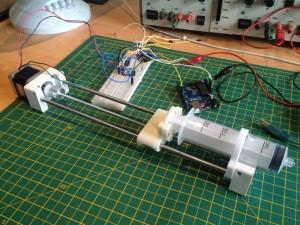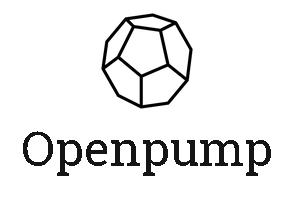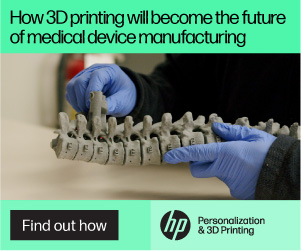Openpump, an open-source syringe pump made to dispense fluids over a set period of time, is just like the syringe pumps used to administer medication in hospitals and laboratory environments.
Most often used to perform chemical or biomedical research, pumps like this open-source version could easily be used for 3D printing extrusion of paste or as part of a 3D bioprinter for outputting biological materials.
It’s a collaboratively-designed, general-purpose syringe pump platform which can be customized for a variety of uses, and the hardware design is available under an open source license which enables the design to be modified as needed.
Openpump was initiated by Gerrit Niezen for his work as a member of the Techealth initiative at Swansea University in Wales. That group has been researching the usability, interface, and interaction design of infusion pumps as part of the CHI+MED project, and it dawned on them that no such complete, open-source infusion pump could be found.
Niezen was once a PhD candidate in the Department of Industrial Design at TU Eindhoven, where he earned his BEng Computer Engineering, and he received his MEng Computer Engineering from the University of Pretoria in South Africa. Following a brief stint in the private sector, Niezen returned to the University of Pretoria as a lecturer in software engineering and network security. He also taught a postgraduate class in wireless sensor networks, and after completing his PhD work in the Netherlands, he signed on at the Computer Science Department at Swansea University in 2012.
While the creators say “there are some great open-source pump projects out there they tend to focus on one specific area, like the software or the physical design.”
“We wanted to create a community that focuses on the whole solution, from the mechanical parts through to the user experience design,” Niezen writes. “If you’re a software developer, you can try to reverse-engineer existing solutions or try to build simulations of how you think an infusion pump should work. However, if you would like to create software that you can test on a real pump, there is no complete open reference implementation you can build on that just works.”
 According to Niezen, the best work is done using the tools that developers are familiar with. He says the Openpump project tries not to enforce a specific toolkit or workflow, but it provides a number of tutorials and guides to help with tools and software they believe will get potential users up and running fast.
According to Niezen, the best work is done using the tools that developers are familiar with. He says the Openpump project tries not to enforce a specific toolkit or workflow, but it provides a number of tutorials and guides to help with tools and software they believe will get potential users up and running fast.
Collaboratively designed, this general-purpose syringe pump platform is, as a result of its open architecture and bill of materials, easy to repair as well if something goes wrong.
The mechanical and CAD design of Openpump is based on work by Bas Wijnen, Emily Hunt, Gerald Anzalone, and Joshua Pearce of the Michigan Tech Open Sustainability Lab.
 Building the electronics for the pump requires Arduino Mega 2560, Gameduino 2 (an open-source hardware touchscreen), the Pololu DRV8834 Low Voltage Stepper Motor Driver Board, and an ELMA E37 dual concentric rotary encoder.
Building the electronics for the pump requires Arduino Mega 2560, Gameduino 2 (an open-source hardware touchscreen), the Pololu DRV8834 Low Voltage Stepper Motor Driver Board, and an ELMA E37 dual concentric rotary encoder.
The software and firmware of this project is copyrighted by Swansea University, but it’s available under the GNU Affero General Public License, and the CAD design file for the linear actuator is copyrighted by Michigan Technological University but licensed as part of a project with the Michigan Tech Open Sustainability Technology Research Group for open use as well.
If you want to make your own version of Openpump, full source code and design files are available through the Openpump site and on GitHub if you wish to contribute to the development of the project.
Could you find a use in your 3D printing work for this versatile syringe pump? Let’s know what you think about the project on the Open-Source Syringe Device With Bioprinting Potential thread on 3DPB.com.
Subscribe to Our Email Newsletter
Stay up-to-date on all the latest news from the 3D printing industry and receive information and offers from third party vendors.
You May Also Like
3D Printing News Briefs, April 13, 2024: Robotics, Orthotics, & Hypersonics
In 3D Printing News Briefs today, we’re focusing first on robotics, as Carnegie Mellon University’s new Robotics Innovation Center will house several community outreach programs, and Ugogo3D is now working...
Rail Giant Alstom Saves $15M with 3D Printing Automation Software 3D Spark
3D Spark has entered into a three-year deal with the rail giant Alstom. Alstom, a transport behemoth with annual revenues of $16 billion, specializes in the manufacture of trains, trams,...
Meltio Expands Global Reach with New Partnerships in the Americas and Europe
Spanish 3D printing manufacturer Meltio has expanded its sales network across the globe. With the addition of three new partners in the United States, Brazil, Argentina, and Italy, Meltio aims...
3D Printing Webinar and Event Roundup: April 7, 2024
Webinars and events in the 3D printing industry are picking back up this week! Sea-Air-Space is coming to Maryland, and SAE International is sponsoring a 3D Systems webinar about 3D...

































